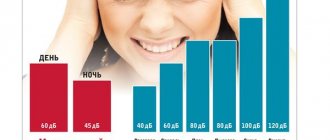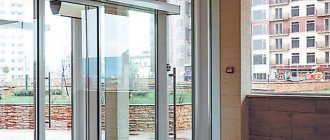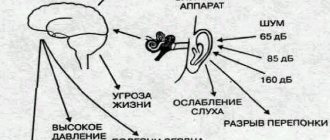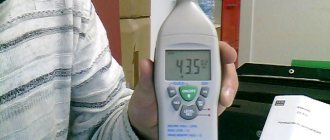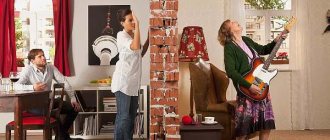The state of the Russian Federation provides an hour-long period during which it is prohibited to make noise, listen to music and carry out repair work in residential buildings. Plus, the peace and quiet of citizens is protected during the day and at night. There is also the concept of permissible noise level. The noise level in an apartment (its maximum permissible standards in decibels) is especially relevant for residents of apartment buildings living in large cities. Here, unacceptable noisy behavior can come not only from neighbors. When loud sounds cause concern, even at permitted times, if the maximum permissible noise level is exceeded, every citizen of the Russian Federation has the right to conduct an examination and bring the offender to justice. For example, neighbors may be listening to music through amplifiers too loudly, or there may be construction going on under their windows.
The noise level of any sound is measured in decibels. The legislation of the Russian Federation establishes a standard of 55 decibels during the day and 45 decibels at night. These maximum permissible standards should in no case be exceeded, since exposure to increased noise has a negative impact on human health. In particular, the nervous system suffers and headaches occur. Therefore, it is important to know how to act in such cases.
Acceptable noise level
Sanitary and epidemiological standards establish the maximum permissible noise level in residential premises. Their compliance is necessary so that all residents of apartment buildings feel comfortable in their apartments.
Thus, noise level standards in residential premises are not intended to spoil the lives of music lovers, but to protect the psychological health of all residents of the house.
In accordance with Sanitary Standards SN 2.2.4/2.1.8.562-96 “Noise in workplaces, in residential and public buildings and in residential areas,” the maximum noise level in residential premises is:
- 55 dB during the daytime (from 7.00 to 23.00);
- 45 dB at night (from 23.00 to 7.00).
The periods of daytime and nighttime are established by regional legislation. Therefore, they differ in different regions of the Russian Federation.
Noise level
Some regions, for example, Moscow, Omsk region, establish a period of silence during the daytime. It is intended for children's daytime sleep. At this time, you should also not make noise or do loud repair work in multi-story buildings. In Moscow, the period of daytime silence lasts from 13.00 to 15.00 hours, and in the Omsk region - from 13.00 to 14.00 hours.
2021 Directories
Sound volume. Noise level and its sources
The physical characteristic of sound volume is the sound pressure level, in decibels (dB). “Noise” is a disorderly mixture of sounds.
Low and high frequency sounds seem quieter than mid frequency sounds of the same intensity. Taking this into account, the uneven sensitivity of the human ear to sounds of different frequencies is modulated using a special electronic frequency filter, obtaining, as a result of normalization of measurements, the so-called equivalent (energy-weighted) sound level with the dimension dBA (dB(A), then Yes – with filter “A”).
A person, in the daytime, can hear sounds with a volume of 10-15 dB and higher. The maximum frequency range for the human ear, on average, is from 20 to 20,000 Hz (possible range of values: from 12-24 to 18,000-24,000 hertz). In youth, mid-frequency sound with a frequency of 3 KHz is better heard, in middle age - 2-3 KHz, in old age - 1 KHz. Such frequencies, in the first kilohertz (up to 1000-3000 Hz - the zone of speech communication) - are common in telephones and on radios in the MF and LW bands. With age, the perceptible sound range narrows: for high-frequency sounds - decreasing to 18 kilohertz or less (in older people, every ten years - by about 1000 Hz), and for low-frequency sounds - increasing from 20 Hz or more.
In a sleeping person, the main source of sensory information about the environment is the ears (“sensitive sleep”). Hearing sensitivity at night and with eyes closed increases by 10-14 dB (up to the first decibels, on the dBA scale), compared to the daytime, therefore, loud, sharp noise with large jumps in volume can wake up sleeping people.
If there are no sound-absorbing materials (carpets, special coverings) on the walls of the premises, the sound will be louder due to multiple reflections (reverberation, that is, echo from the walls, ceiling and furniture), which will increase the noise level by several decibels.
Noise scale (sound levels, decibels), in the table
| Decibel dBA | Characteristic | Sound sources |
| 0 | Can not hear anything | |
| 5 | Almost inaudible | |
| 10 | Almost inaudible | quiet rustle of leaves |
| 15 | Barely audible | rustle of leaves |
| 20 | Barely audible | human whisper (at a distance of 1 meter). |
| 25 | Quiet | human whisper (1m) |
| 30 | Quiet | whispering, ticking of the wall clock. The permissible maximum according to the standards for residential premises at night, from 11 pm to 7 am (SNiP 23-03-2003 “Noise Protection”). |
| 35 | Quite audible | muffled conversation |
| 40 | Quite audible | ordinary human speech. The norm for residential premises during the day, from 7 a.m. to 11 p.m. Read more in Rossiyskaya Gazeta. A forty-decibel sound level is established as acceptable by standards (SP 51.13330... PROTECTION AGAINST NOISE, SNiP 23-03...) for auditoriums of educational organizations, classrooms, classrooms, libraries and conference rooms. |
| 45 | Quite audible | normal, calm conversation. The norm for gyms. |
| 50 | Clearly audible | conversation, typewriter. The norm for offices in administrative buildings, office and work premises. |
| 55 | Clearly audible | Upper standard for class A office premises (according to European standards) |
| 60 | Noisy | Norm for offices |
| 65 | Noisy | loud conversation (1m) |
| 70 | Noisy | loud conversations (1m) |
| 75 | Noisy | scream, laugh (1m) |
| 80 | Very noisy | a scream, a motorcycle with a muffler, the noise of a vacuum cleaner (with a high engine power - 2 kilowatts). |
| 85 | Very noisy | loud human scream, motorcycle with muffler |
| 90 | Very noisy | loud screams, freight railway car (seven meters away) |
| 95 | Very noisy | subway car (7 meters outside or inside the moving car) |
| 100 | Extremely noisy | orchestra, subway car (intermittently), thunder, the screech of a running chainsaw, the noise of a gasoline lawn mower
|
| 105 | Extremely noisy | noise in the aircraft cabin (until the 80s of the twentieth century) and the maximum sound pressure level (in dBA) for low-power gasoline-powered chain saws at their maximum operating modes. |
| 110 | Extremely noisy | helicopter |
| 115 | Extremely noisy | sandblasting machine (1m) and similar mechanisms |
| 120 | Almost unbearable | jackhammer (1m) |
| 125 | Almost unbearable | |
| 130 | Pain threshold | plane at the start |
| 135 | Contusion | |
| 140 | the sound of a jet plane taking off, at the edge of the runway | |
| 145 | Contusion | rocket launch. |
| 150 | the sound at the moment of firing from an “unsuppressed” (without a silencer), medium-caliber gun, near the muzzle of the barrel. | |
| 155 | Concussion, injuries | |
| 160 | Shock, injuries | shock wave from a supersonic aircraft |
| At sound levels above 160 decibels - rupture of eardrums and lungs is possible, more than 200 - death (noise weapon) | ||
* In regions, in large cities, at the local level, their own restrictive norms and rules may apply, based on legislative amendments to the Law on Silence, adopted by regional legislators, the implementation of which is controlled by local authorities.
The maximum permissible sound levels (LAmax, dBA) are 15 decibels more than “normal”. For example, for living rooms of apartments, the permissible constant sound level during the daytime is 40 decibels, and the temporary maximum is 55. With constantly operating engineering equipment, an amendment of minus 5 is taken into account.
Inaudible noise is sounds that are not perceived by the ear, with frequencies less than 16-20 Hz (infrasound) and more than 20 KHz (ultrasound). Low-frequency vibrations of 5-10 hertz can cause resonance, vibration of internal organs and affect brain function. Low-frequency acoustic vibrations increase aching pain in bones and joints in sick people. Infrasound sources: cars, carriages, thunder from lightning, etc.
In workplaces, the maximum permissible equivalent sound levels by law for intermittent noise are: the maximum sound level should not exceed 110 dBAI, and for impulsive noise - 125 dBAI. It is prohibited to stay even for a short time in areas with deafening sound pressure levels - over 135 dB, in any octave band.
The noise emitted by a computer, printer and fax in a room without sound-absorbing materials can exceed a level of 70 db. Therefore, it is not recommended to place a lot of office equipment in one room where people may be. Equipment that is too noisy should be moved outside the premises where the staff workstations are located. You can reduce the noise level if you use noise-absorbing materials as room decoration and curtains made of thick fabric. Soft (foam, sold in pharmacies) anti-noise earplugs will also help if their sound reduction parameter (SNR) is at least 30 decibels. Explosive sounds are dampened using special mechanical membranes. High-quality insulating headphones (acceptable in terms of price and quality, can be found, for example, in hardware stores) - provide maximum hearing protection, reliably covering not only the ear canal, but also the adjacent temporal bone of the skull.
The crying of a child, compared to other sounds of the same volume, has a much stronger effect on the human psyche, as an irritant and incentive for active physical actions (calming, feeding, etc.) They are unlikely to be fined for the noisy children of neighbors above, if the cause of the noise is not related to domestic violence or family dysfunction. Not too loud, the clatter of ordinary steps, too, is unlikely to be grounds for prosecution.
When constructing buildings and structures in accordance with modern, more stringent sound insulation requirements, technologies and materials must be used that can provide reliable protection from noise.
For fire alarms: the sound pressure level of the useful audio signal provided by the siren must be at least 75 dBA at a distance of 3 m from the siren and no more than 120 dBA at any point in the protected premises (clause 3.14 NPB 104-03).
A high-power siren and a ship's howler - the pressure is more than 120-130 decibels.
Special signals (sirens and “quacks” - Air Horn) installed on official vehicles are regulated by GOST R 50574-2002. The sound pressure level of the signaling device, when a special sound signal is given, at a distance of 2 meters along the horn axis, must be not lower than: 116 dB(A) – when installing a sound emitter on the roof of a vehicle; 122 dBA – when installing the radiator in the engine compartment of a vehicle. Fundamental frequency changes should be from 150 to 2000 Hz. Cycle duration is from 0.5 to 6.0 s.
The horn of a civilian vehicle, according to GOST R 41.28-99 and UNECE Rules No. 28, must produce a continuous and monotonous sound with an acoustic pressure level of no more than 118 decibels. This is the same order of magnitude as the maximum permissible values for car alarms.
If a city dweller, accustomed to constant noise, finds himself in complete silence for some time (in a dry cave, for example, where the noise level is less than 20 db), then he may well experience depression instead of rest.
Sound meter device for measuring sound level, noise
To measure the noise level, a sound level meter is used (pictured), which is produced in different modifications: household (estimated price - 3-4 tr., measurement ranges: 30-130 dB, 31.5 Hz - 8 kHz, filters A and C), industrial (integrating, etc.) Of the most common models, we can distinguish: SL, octave, svan. On the dial indicators of sound level meters, the needle can, due to inertia (at a certain dynamics of increase in the sound level), fly further than the peak value of the signal itself. Therefore, the final values (already processed by the chip, according to the algorithm of the selected filter) are taken from the digital display of the device.
To measure infrasonic and ultrasonic noise, professional wide-range noise meters are used. If constant monitoring of “acoustic smog” is not required, then they are limited to single, estimated measurements. Devices are rented for a period of time, or a specialist with certified equipment is invited.
Also, there are many different special applications for mobile devices (smartphones and tablet computers) that allow you to approximately determine the noise level in decibel units. These programs, including their free versions, can be downloaded from Google Play, Android Market or App Store. In order for the measurement results to be correct, it is necessary to pre-calibrate the device, checking it against a reference sound level meter or, at least approximately, against a control sound source with a known sound pressure level. Other settings before taking measurements: direction of the microphone, its sensitivity to the desired frequencies of the spectrum of acoustic vibrations, etc. When working outdoors, you may need a wind shield on the microphone to prevent sound interference from the wind. Video instructions on how to use the devices and reviews of the results of experiments and tests can be found on YouTube.
Sound frequency ranges
Subranges of the audio frequency spectrum to which the filters of two- or three-way speaker systems are tuned: low-frequency - fluctuations up to 400 hertz; mid-frequency – 400-5000 Hz; high frequency – 5000-20000Hz
Musical classification, names of singing voices by frequency range, taking into account the gender of performers
Men's:
Bass profundo (super low, contractave) – 44-262 Hz Bass (low) – 82-349 Hz Baritone (middle) – 110-392 Hz Tenor (high) – 132-532 Hz Tenor altino (super high) – 131- 700 Hz
Women's:
Contralto (low) – 165-692 Hz Mezzosoprano (middle) – 220-880 Hz Soprano (high) – 262-1046 Hz Coloratura soprano (the highest female voice, up to the “F” note of the third octave) – 260-1400 Hz.
Frequency ranges of sounds produced when playing musical instruments:
Acoustic guitar – 82-1175 Hz Electric guitar – 82-1570 Hz Bass guitar – 41-250 Hz Trumpet – 160-1200 Hz Violin – 200-2800 Hz Grand piano – 27-4200 Hz
Symphony orchestra - 31-15000 Hz Variety orchestra - 25-16000 Hz Brass band - 50-10000 Hz
Speed of sound and its range
The approximate speed of audible, mid-frequency sound (frequency of about 1-2 kHz) and the maximum range of its propagation in various environments: in the air - 344.4 meters per second (at a temperature of 21.1 Celsius) and approximately 332 m/s - at zero degrees; in water - approximately 1.5 kilometers per second; in hard wood - about 4-5 km/s along the fibers and one and a half times less - across.
At 20 °C, the speed of sound in fresh water is 1484 m/s (at 17 ° - 1430), in sea water - 1490 m/s.
The speed of sound in metals and other solids (the values of only the fastest, longitudinal elastic waves are given): in stainless steel - 5.8 kilometers per second. Cast iron – 4.5 Ice – 3-4 km/s Copper – 4.7 km/s Aluminum – 6.3 km/s Polystyrene – 2.4 kilometers per second.
With increasing temperature and pressure, the speed of sound in air increases. In liquids there is an inverse relationship with temperature.
Velocity of propagation of elastic longitudinal waves in rock masses, m/s: soil – 200-800 sand dry / wet – 300-1000 / 700-1300 clay – 1800-2400 limestone – 3200-5500
They reduce the range of sound propagation along the surface of the earth - high obstacles (mountains, buildings and structures), the opposite direction of the wind and its speed, as well as other factors (low atmospheric pressure, high temperature and low air humidity). Distances at which the source of loud noise is almost inaudible - usually from 100 meters (in the presence of high obstacles or in a dense forest), to 300-800 m - in open areas (with a fair average wind - the range increases to a kilometer or more) . With distance, higher frequencies are “lost” (attenuated and dissipated faster) and low-frequency sounds remain. The maximum propagation range of medium-intensity infrasound (a person cannot hear it, but there is an effect on the body) is tens and hundreds of kilometers from the source.
The attenuation intensity (absorption coefficient) of mid-frequency sound (about 1-8 kHz), at normal atmospheric pressure and temperature, above the ground with short grass, in the steppe, is approximately 10-20 dB for every 100 meters. Absorption is proportional to the square of the frequency of the acoustic waves.
To calculate the approximate distance at which sound from a point source will still be heard (to the level accepted, in the calculated “ideal” model, the threshold of audibility for the human ear or a microphone of electronic recording equipment), its level is successively reduced by 6 decibels, with each increase double the distance. For example, if the sound pressure at two meters is 40 dB, then at four meters it is 34 dB.
// comment by the author of the site KAKRAS.RU If during a thunderstorm you saw strong lightning and after 12 seconds heard the first rumbles of thunder, this means that lightning struck four kilometers from you (340 * 12 = 4080 m.) In rough calculations, it is accepted – three seconds per kilometer of distance (in airspace) to the sound source.
The line of propagation of sound waves deviates in the direction of decreasing the speed of sound (refraction on a temperature gradient), that is, on a sunny day, when the air at the surface of the earth is warmer than the air above it - the line of propagation of sound waves bends upward, but if the upper layer of the atmosphere turns out to be warmer than the ground layer, then the sound will go back down from there and will be heard better.
Sound diffraction is the bending of waves around an obstacle when its dimensions are comparable to or less than the wavelength. If it is much longer than the wavelength, then the sound is reflected (the angle of reflection is equal to the angle of incidence), and an acoustic shadow zone is formed behind the obstacles.
Reflections of a sound wave, its refraction and diffraction - cause multiple echoes (reverberation), which has a significant impact on the audibility of speech and music indoors or outside, which is taken into account during sound recording to obtain live sound (by placing small-sized stereo images in optimally close areas of the stereo image). microphones with a sharp directivity characteristic, for recording direct sound, followed by mixing and mixing the “dry” recording with a processor into digital or using long-distance, well-tuned ambient microphones, with additional recording of reflected sounds).
Conventional sound insulation does not protect against infrasound.
The noisiest cities in Russia are many regional and district centers of the country, almost all areas of major transport hubs and urban residential areas along avenues and near airports. This category includes: Moscow, St. Petersburg, Krasnoyarsk, Rostov-on-Don, Chelyabinsk, Yekaterinburg, Perm, Irkutsk, Yaroslavl, Voronezh, Novokuznetsk, Nizhny Tagil, Magnitogorsk, Omsk, Ufa, Samara, Nizhny Novgorod, Novosibirsk, Murmansk , Perm, Tula, Ulyanovsk, Kemerovo and others.
The main sources of noise in the city are trams, cars, trucks, operating industrial enterprises, construction sites and airliners flying at low altitude. Even realtors adjust real estate prices depending on the local level of noise pollution in a house with apartments for sale or rent.
The trend is that the intensity of urban noise, due to the increasing number of cars on the roads, is only growing. The general situation is aggravated by car radios blaring at low frequencies from cars and speaker systems from open windows of high-rise buildings.
If, according to the decision of the municipal authorities, heavy transport flows are pushed onto long-distance bypass roads, beyond the boundaries of populated areas, and intra-city cargo transportation is allowed only at strictly defined hours of the day and only on streets permitted for this purpose - the listed measures can significantly improve the environmental situation and increase the comfort of living.
A separate story is the noise made by birds, insects, and pets. These are, for example, barking dogs and meowing cats. In the garden plots of private houses, there can be a lot of all sorts of noisy living creatures - pigs squealing from hunger, crowing roosters, loudly cackling geese, mooing cows. Therefore, the private sector on the outskirts of cities often resembles a large village, due to the characteristic sounds of rural discord.
In large cities, in industrial centers, the level of background noise is higher than in small settlements. A different rhythm of life. Therefore, in megacities and industrial centers, their own standards for permissible noise levels and time restrictions may apply.
Noise from air conditioners and refrigerators
Modern split air conditioning systems operating in quiet mode (designed specifically to be turned on at night) usually do not exceed the sound level allowed by standards for residential premises. But this condition is really only feasible for indoor (room) air conditioner units. External (street, window) units with a compressor and an exhaust fan, placed outside the premises, are much louder and, as they say, “along the entire street.” In the instructions for external units, decibel values are indicated, but these are significant values. For the closest neighbors, whose windows face the same side of the wall of a multi-story building, this is a real problem that causes inconvenience.
Malfunctions in the operation of the refrigerator electric motor (poor rotor alignment, poor-quality assembly and defective components) can cause severe vibration and excessive noise. If, moreover, there are no damping rubber pads under the legs, then the vibration is transmitted to the floor and further into the floor slab.
Acoustic repellers
Loud sound and ultrasound with a frequency of 20-50 kilohertz, reproduced with modulation of several hertz, are used to scare away birds from airfields, animals (dogs, animals of prey) and insects (mosquitoes, midges), unless they are deaf. Infrasonic repellers (at a frequency that causes an uncontrollable feeling of fear and a state of panic), of sufficient power, can even act at the level of the internal organs of a living organism, causing their vibrations to resonate. The most compact and wide-range emitters include piezo sound emitters.
The toxicity of sound depends on the shape of the signal, which has a stepped (for example, rectangular) or smooth (for example, sinusoidal) graph, and on the difference in the phases of the oscillations when mixing them. Ready-made sound files and tuning presets can be found and downloaded on the Internet.
Acoustic scares and noise shockers are not an absolutely reliable means of protection, since the degree of their impact depends on many factors - individual characteristics, direction and power of the emitter, working conditions, etc. In professional equipment, standard means of combined action are used. For example, if it is necessary to completely clear a protected area of moles, mice and rats, not only acoustic, but also seismic emitters (periodically transmitting mechanical vibrations into the ground) are used.
When working with equipment, you should follow the precautions specified in the instructions for each device and not violate safety regulations.
Faster than the waves
After the plane overcomes the speed of sound (Mach = 1), the moment it passes the front of the Mach cone is accompanied by a sharp, loud bang, like an explosion. Overcoming each subsequent sound barrier (M = 2,3,4... Mach numbers) narrows the cone of the shock wave (shock wave) and makes the “boom” even louder.
The observer hears a roar when a very fast moving body (an airplane, a shell or a bullet) has already flown past. For example, when shooting from a Mosin rifle with a standard cartridge at a kilometer distance, the sound of the shot arrives approximately two seconds after the bullet arrives and hits the conditional target. At subsonic speeds, on the contrary, first the noise approaches (rustle, whistle, howl of a mine or shell), and then its source.
Hypersound – movement faster than Mach 5.
At takeoff, mines or projectiles fired at maximum range follow a flat ballistic trajectory - their speed is usually already subsonic.
Binaural Beat Frequency
When the right and left ears hear sounds (for example, from the player’s headphones, f < 1000 hertz, f1 – f2 < 25 Hz) of two different frequencies, the brain, as a result of processing these signals, receives a third, difference beat frequency (binaural rhythm, which is equal to arithmetic difference between their frequencies), “audible” as low-frequency vibrations that coincide with the range of normal brain waves (delta - up to 4 Hz, theta - 4-8 Hz, alpha - 8-13 Hz, beta - 13-30 Hz). This biological effect is taken into account and used in recording studios - to transmit low frequencies that are not directly reproduced by the speakers of conventional stereo systems (due to design limitations), but these methods and methods, if used ineptly, can negatively affect the psychological state and mood of the listener, since they differ from the natural (almost “symmetrical”), natural perception of noises and sounds by the human ear.
// with the binaural effect, not three, but two sounds are “heard”: the first is the arithmetic mean, in frequency, from two real ones, and the second is a clock sound, simulated by the brain. As the frequency difference increases (>20-30 hertz), the sounds decompose, in perception, into their original ones, with their actual frequency, and the binary effect disappears. The difference in the phases of sound waves arriving at the right and left ear - allows you to determine the direction to the source of sound / noise, its volume and timbre - the distance to it.
International standardization of physical parameters
The development and dissemination of standards, since the beginning of the 20th century, has been promoted by the International Electrotechnical Commission (IEC, the organization’s website is located at https://www.iec.ch/). The Russian Federal Agency for Technical Regulation (Rosstandart) is a full member of this organization. The IEC published the International Electrotechnical Vocabulary (IEV) to unify electrical terminology. There are several domestic Internet resources from which you can, in whole or in parts, download this document translated into Russian.
National standards of IEC member countries are identical or modified in relation to international ISO standards. As an example, “GOST R 52797.1-2007 Acoustics. Recommended methods for designing low-noise workplaces in industrial premises. Part 1. Principles of noise protection" and other regulatory documents.
Information in the universal Internet encyclopedia: https:// ru.wikipedia.org/wiki/Sound_volume
Schumann resonance
In those places of the ionosphere where electromagnetic waves of sufficient power hit, with a well-established (with high signal quality) Schumann resonance, especially at the frequencies of its first harmonics, the resulting plasma clots begin to emit infrasonic acoustic (sound) waves. Specific ionospheric emitters exist as long as lightning discharges continue in the initiating thunderstorm source - approximately up to the first tens of minutes. For the eight-hertz frequency, these emitting points are located on the opposite side of the globe from the electromagnetic source. waves On 14 Hz - in a triangle. Local, highly ionized regions in the lower layers of the ionosphere (sporadic Es layer) and plasma reflectors can be interconnected or spatially coincide.
How to preserve your hearing
Long-term exposure to noise levels exceeding 80-90 decibels can lead to partial or complete hearing loss (at concerts, the power of speaker systems can reach tens of kilowatts). Also, pathological changes in the cardiovascular and nervous systems can occur. Absolutely safe for the human ear - only sounds with a volume of up to 35 dB.
The reaction to prolonged and strong noise exposure is “tinnitus” - ringing in the ears, “noise in the head”, which can develop into progressive hearing loss. It is typical for people over 30 years old, with a weakened body, stress, alcohol abuse and smoking. In the simplest case, the cause of ear noise or hearing loss may be a wax plug in the ear, which can be easily removed by a medical specialist (by rinsing or extraction). If the auditory nerve is inflamed, this can be cured, also relatively simply (with medications, acupuncture). Pulsating noise is a more difficult case to treat (possible causes: narrowing of blood vessels due to atherosclerosis or tumors, as well as subluxation of the cervical vertebrae).
To protect your hearing: • do not increase the sound volume in the player's headphones, trying to drown out external noise (in the subway or on the street). At the same time, electromagnetic radiation to the brain from the headphone speaker also increases; • in a noisy place, to protect your hearing - use anti-noise soft earplugs, earbuds or headphones (noise reduction is more effective at high sound frequencies). They must be adjusted individually to the ear. In field conditions, they also use flashlight bulbs (they are not for everyone, but they are the right size). In shooting sports, individually molded “active earplugs” with electronic filling are used, at the same price as a telephone. They must be stored in packaging. It is better to choose earplugs made from hypoallergenic polymer that have good SNR (noise reduction) of 30 dB or more. In case of sudden changes in pressure (on an airplane), to equalize it and reduce pain, you need to use special earplugs with micro holes; • use noise-insulating, environmentally friendly materials in the premises to reduce noise; • when underwater diving, to prevent the eardrum from rupturing, blow in time (blow through the ears by holding your nose or swallowing). Immediately after diving, you cannot board a plane. When jumping with a parachute, you also need to equalize the pressure in a timely manner so as not to get barotrauma. Consequences of barotrauma: noise and ringing in the ears (subjective “tinnitus”), hearing loss, ear pain, nausea and dizziness, and in severe cases, loss of consciousness. • with a cold and runny nose, when the nose and maxillary sinuses are blocked, sudden changes in pressure are unacceptable: diving (hydrostatic pressure - 1 atmosphere per 10 meters of immersion depth in water, that is: two - at ten, three - at around 20 m. etc.), parachute jumping (0.01 atm per 100 m altitude, increases rapidly, with acceleration). // approximately seven and a half millimeters of mercury barometer - for every hundred meters, in height. • give your ears a break from loud noise.
Techniques usually used to equalize pressure on both sides of the eardrum: swallowing, yawning, blowing with a closed nose. The Frenzel method is to hold your nostrils and forcefully move your tongue back along the roof of your mouth (when the muscles contract, the nasal cavities and Eustachian tubes will open). When firing a shot, artillerymen open their mouths or cover their ears with the palms of their hands.
Common causes of hearing loss: water getting into the ears, infections (including those of the respiratory system), trauma and tumors, the formation of cerumen and its swelling upon contact with water, prolonged stay in a noisy environment, barotrauma due to a sudden change in pressure, inflammation of the middle ear – otitis (accumulation of fluid behind the eardrum).
Ear diseases are treated by an otolaryngologist.
[ to Home Page ]
Place an ad
Design and installation of sound insulation in professional recording studios. Sound level meter SL. Household and industrial noise meters.
Copyright © 2007-2021, KAKRAS.RU
When is noise allowed?
Regional regulations on silence establish exceptions to the general rule. Among them:
- measures to apprehend the criminal;
- emergency (fire, flood, hurricane, explosion);
- actions aimed at preventing an emergency situation or eliminating its consequences;
- holding public events (New Year's celebrations).
In addition, it will not be possible to hold neighbors accountable if the noise is explained by the residents’ activities (snoring, steps, children’s crying).
Where should I go if my neighbors’ children are constantly crying, making noise, or running around?
What should you do if your neighbors are making repairs that are very noisy and drill every day?
How to prove that neighbors are noisy?
First, you need to determine why you need to prove that your neighbors are noisy. Most methods for determining sound volume will not have evidentiary value in a trial. Therefore, they can be used exclusively for yourself.
Options that have evidentiary value require significant financial costs.
Note! These costs will be compensated only if you go to court. Moreover, in order for the court to decide to recover the costs of the sound level examination from the defendant, it is necessary to win the case.
As practice shows, it is very difficult for a plaintiff to win such disputes in court. Especially if the claim is filed by one applicant, and not by neighbors collectively. Therefore, there is a high probability that the costs of the examination will be paid from the plaintiff’s budget.
If the plaintiff is ready to sacrifice an amount of 20,000 - 30,000 rubles, then measurements must be taken. To go to court, it is necessary not only to measure the noise level, but also to issue an expert report that proves that the maximum level has been exceeded.
Car audio competitions
Recently, acoustic car tuning competitions
. Enthusiastic car enthusiasts install the most powerful audio systems in their cars and compete to see who has the best one. Let's look at some aspects of this action.
- Louder = better
. At car audio competitions, the one whose car sounds loudest wins. Other parameters are almost never taken into account. - Power
.
They often write “ system power 50KW
”.
However, this is not the case. In this case, such power is instantaneous power by impedance. Simplifying all the features of harmonic oscillations, this is power that occurs at a certain frequency in an extremely short period of time. This is also called “Chinese kilowatts”
. In fact, the power is hundreds of times less. - Design
. If a system doesn't win in volume, it can win in design. Unlike loudness, this parameter cannot be measured and is very subjective. - Practicality
.
At the moment, the record for the volume of a car audio system is more than 180 dB
. This is a lethal level. This leads to a logical question: why is such a system needed?
As with any tournaments and competitions, there are awards. Such events are sponsored by representatives of giant audio industry companies such as Pioneer
,
Alpine
and others. The prizes are often their products.
How to measure?
To measure the noise level you can use:
- programs and mobile applications;
- household sound level meter.
You can also order a professional study from a specialized private company that has a license for this type of activity, or from Rospotrebnadzor.
Programs and applications
In 2021, you can find a program and application for measuring noise on any device: computer, laptop, smartphone.
Popular options:
- MacOS: Sound Level Meter, dB Meter, Decibel Meter Pro, Decibel 10th;
- Android: decibel, Noise Meter, Decibel Meter, Sound Meter;
- Windows: Decibel Meter Pro, Cyberx Decibel Meter, Decibel Meter Free.
If the program is installed on a computer or laptop, you must connect a microphone to the device. It is with the help of it that sounds will be read. The program will analyze the sound level and display the result. However, the conclusion of the program or application will not be considered as evidence in government agencies.
Sound level meter
There are special devices to change the noise level. A sound level meter measures sound in decibels.
The device consists of:
- indicator;
- detector;
- filtration elements;
- amplifier;
- microphone.
The device operates using a battery. The sound is measured using a microphone, and the result is displayed on the device screen.
Note! The readings from a household sound meter are not evidence in court or before an administrative commission.
Rospotrebnadzor
There is an opinion that specialists from Rospotrebnadzor can be called to measure any noise. However, this issue is not within their competence.
Note! If your neighbors are noisy, there is no need to call Rospotrebnadzor employees. Department specialists are not involved in monitoring compliance with the level of silence.
Rospotrebnadzor employees will help if the noise comes from:
- from a sports and fitness facility built into the house;
- nightclub located in the house;
- when operating construction equipment (if the construction site is located near the house);
- from air conditioners of retail outlets located in the house.
That is, to apply to Rospotrebnadzor, it is necessary that the noise was caused by equipment, and not by people’s behavior (speech, swearing, singing, playing musical instruments), mass events or car alarms.
To measure noise in an apartment, you must contact directly the Rospotrebnadzor office at your place of residence. This cannot be done electronically.
Private specialist
A private specialist is an expert who has a license and equipment to change the noise level. This can only be a person with a higher environmental or technical education and completion of courses on this expert topic.
The noise measurement service is provided under an agreement concluded with an expert. The cost of services varies depending on how the result is presented to the customer:
- research protocol – from 10,000 rubles;
- expert opinion (pre-trial examination) – from 20,000 rubles;
- expert opinion (forensic examination) – from RUB 30,000.
The cost also increases if measurements need to be taken at night.
An appraisal report is an official document that can be presented in court as evidence.
Where and how to complain about violation of the silence law
Depending on whether the noise standards in apartments are too high or whether it is a manufacturing enterprise, public place, etc., different structures are involved in investigating violations.
If sound effects have a high range in production, then a government agency should be contacted. When it comes directly to the place of work, the supervisory authority is the labor inspectorate. The sanitary and epidemiological structure of the Russian Federation deals with noise standards in residential buildings.
Algorithm for dealing with high volume levels among neighbors
First, you should talk to the “author” of the noise source. There is a high probability that the problem will be resolved at this stage. If a simple conversation with the offender does not bring the expected result, then you should contact your local police officer. An additional method is to personally visit the nearest police station with a statement.
In the event of an initial complaint, the detective must conduct an educational conversation with the violator of public order. After the second call, an act is drawn up with which you can go to the prosecutor's office or court.
In addition, at the stage of peaceful proceedings, a citizen of the Russian Federation has the right to complain about a noisy tenant to the municipality. The powers of local government officials include conducting a conversation with a violator of public order.
If the case goes to court, then, depending on the damage caused and the degree of adequacy of the defendant, a decision may be made on forced eviction and sale of the apartment. After the sale of real estate, the funds received are distributed between the injured party and the defendant. In addition, the costs of the trial are borne by the guilty party.
Employees of the Criminal Code, Housing Office and Housing Services only have the right to talk with the offender. The Russian state did not grant them any other powers in this matter.
Instances to contact in case of high level of music among neighbors
Since only the policeman has real powers to influence a noise violation violator. When you contact the police station, you must fill out an application.
A sample application to the district commissioner can be found here.
A complaint against a violent neighbor can be filed collectively. To do this, all residents affected by noise should be involved.
An example of a general complaint can be found at this link.
An additional option is to call an employee from the sanitary and epidemiological station who will take measurements at your place of residence. As a result, the presence or absence of deviation from noise standards in decibels in the apartment will be revealed.
Next, with the received paper, the citizen needs to contact consumer supervision (Rospotrebnadzor). Upon acceptance of the application, an employee is sent to the specified address, who makes the final decision on violations.
Necessary documents and evidence of violation of the silence law
Upon arrival of a police officer to the apartment/house, an incident report is drawn up.
This document will be required for the package of papers required when filing a complaint with the prosecutor's office or court.
Moscow standards: Noise level in the apartment and not on the street
An expert assessment by specialists is mandatory. It is necessary to obtain an act of violation of the silence regime from the organization's employees. If a person is harmed, it is recommended to contact a medical facility. After the examination, the doctor will provide a conclusion in the form of a certificate about the extent of the damage, possible consequences, as well as prognosis for recovery.
When will construction and technical expertise be needed?
In a noise situation, neighbors are not always to blame. Sometimes the reason is poor sound insulation. The problem is popular for modern new buildings. When carrying out repairs, first of all it is necessary to pay attention to sound insulation.
If excessive audibility has arisen in an old house, and only recently, you need to find out whether the neighbors have undergone renovations. In pursuit of high ceilings and fashionable finishes, apartment owners remove floors and lay laminate directly on the ceiling. As a result, due to the lack of soundproofing coating, audibility between apartments increases significantly.
To prove problems with sound insulation you must:
- Talk to your neighbors. Perhaps they are not aware of the situation. In this case, you can try to negotiate peacefully.
- If neighbors refuse to resolve the conflict voluntarily, then it is necessary to order a construction and technical examination.
The specialist will conduct an inspection and make a conclusion about compliance with the standards of the soundproofing coating. The result of the work will be an expert opinion. It can be used as evidence in court.
If the court satisfies the plaintiff’s demands, then it will be possible to additionally deduct from the defendant the costs of examinations, legal support and state fees to the court.
Impact on the human body
The sounds that surround every person every day sometimes significantly exceed possible parameters. For example, the sound of a normal vacuum cleaner running reaches 80 decibels. The screams of an adult can be estimated at 90 decibels, the signal of a car - at 120 decibels. The fact is that they are unsystematic.
For a person to feel bad as a result of sound exposure, its consistency is necessary. High and loud sounds have a special impact on children, the elderly, and women. Frequent exposure to noise of various types has a negative impact on the human condition:
- diseases of the nervous system (nervousness, irritability, aggression);
- headache;
- high blood pressure.;
- hearing loss, up to hearing loss.
Children exposed to constant noise attacks experience problems with their studies. Their intelligence, speed of thinking, and level of concentration decrease. The danger of the consequences is expressed in the fact that they do not appear immediately, but after some time.
ATTENTION! A sound of 200 decibels is fatal.
Responsibility measures
For violation of the law on silence, you can be subject to the following types of liability:
- Administrative. In accordance with Art. 6.4 of the Code of Administrative Offenses of the Russian Federation, a fine of 500 to 1,000 rubles is imposed on the guilty person. The decision is made by an administrative commission under the local administration. To bring a neighbor to justice, you must submit an application to the local police officer to draw up a protocol on an administrative violation.
- Civil law. If noise from a neighbor’s apartment leads to health problems, then you can recover compensation for moral damages from the culprits. The applicant will have to prove a cause-and-effect relationship between the health disorder and the noise from the neighboring apartment. In practice, such requirements are rarely met.
In 2021, there are no serious measures to address noisy neighbors. The only option is eviction at the request of the district administration. But this requires a whole range of violations (non-payment of bills, noise, dirt). In this case, the court can evict the owner, sell the apartment, and transfer the proceeds from the sale to the former owner.
Lawyer's answers to private questions
I can't sleep at night. In the apartment above there lives an old woman who watches TV loudly at night. I wanted to call Rospotrebnadzor to measure the noise, but they refused. What to do and where to complain?
This issue is not within the competence of Rospotrebnadzor. In such a situation, contact the local police officer. He will have an explanatory conversation with the neighbor. And if she refuses to comply with the rules, she will draw up an administrative protocol.
The apartment across the wall is rented daily. Either there was silence for weeks, then there were drinking sessions, partying, and company. There is no peace day or night. How to punish neighbors?
File a complaint with the Federal Tax Service that the apartment is rented daily. If a neighbor does not pay taxes, he will receive a large fine. Complaints can be repeated regularly until the owner finds permanent residents.
A neighbor installed an air conditioner near my balcony. I can’t open the window to ventilate in the summer. Terrible noise. How to measure noise and prove its fault?
In this situation, you need to call Rospotrebnadzor. They will take measurements and issue an administrative protocol to the neighbor.

